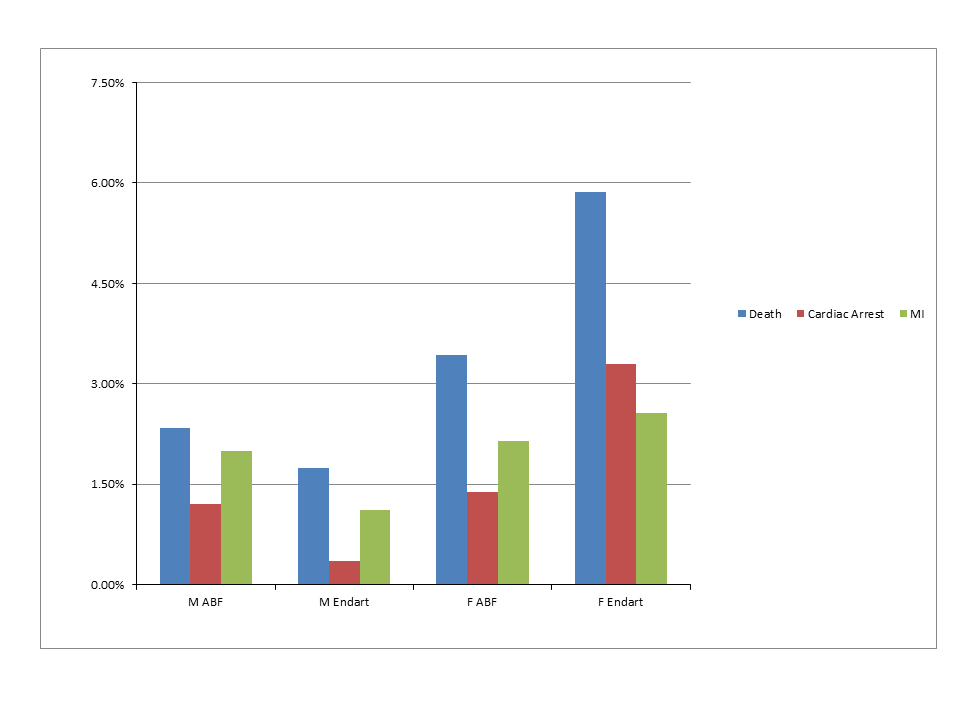Back to 2016 Karmody Posters
Gender Specific Outcomes After Open Surgery for Aortoiliac Occlusive Disease
Marissa Famularo, D.O., Joseph V. Lombardi, M.D., Jose L. Trani, M.D., Alexander B. James, M.D., Jeffrey P. Carpenter, M.D., Francis J. Caputo, M.D..
Cooper University Hospital, Camden, NJ, USA.
Objective: Our objective was to compile contemporary data on open surgical treatment of aortoiliac occlusive disease and identify gender related differences in thirty-day outcomes.
Methods: Patients who underwent open, elective repair of aortoiliac occlusive disease by aortobifemoral bypass (ABF), aortoiliac bypass (AIB) or aortoiliac endarterectomy (AIE) were identified from the American College of Surgeons National Surgical Quality Improvement Program (NSQIP) database (2005-2013). Groups were compared using Fisher’s exact test.
Results: Thirty-day mortality was significantly higher in women than in men (3.92% vs. 2.11%, p<.0001). When analyzed by operation, women had a significantly higher mortality than men after both ABF (3.43% vs. 2.34%, p=0.0106) and AIE (5.86% vs. 1.74%, p<.0001), with the AIB group being too small to reach significance. Women were found to have a higher risk of postoperative cardiac arrest (1.93% vs 0.93%, p<.0001), despite a lower prevalence of preoperative cardiac bypass surgery (12.37% vs 18.97%, p<.0001) and history of myocardial infarction (1.15% vs 2.51%, p<.0001). This difference was especially evident after endarterectomy, where women had a 3.28% incidence of cardiac arrest, compared with a 0.35% incidence in men.
Conclusions: Females undergoing open aortoiliac reconstruction for the treatment of aortoiliac occlusive disease suffer a significantly higher 30-day mortality than males. This disparity is seen in aortobifemoral bypass, but is especially pronounced after aortoiliac endarterectomy. The higher risk of postoperative cardiac arrest in women coupled with a lower prevalence of preoperative identified heart disease, suggests that our current methods of preoperative cardiac evaluation need improvement in identifying clinically significant ischemic heart disease preoperatively in women. 
Back to 2016 Karmody Posters
|







